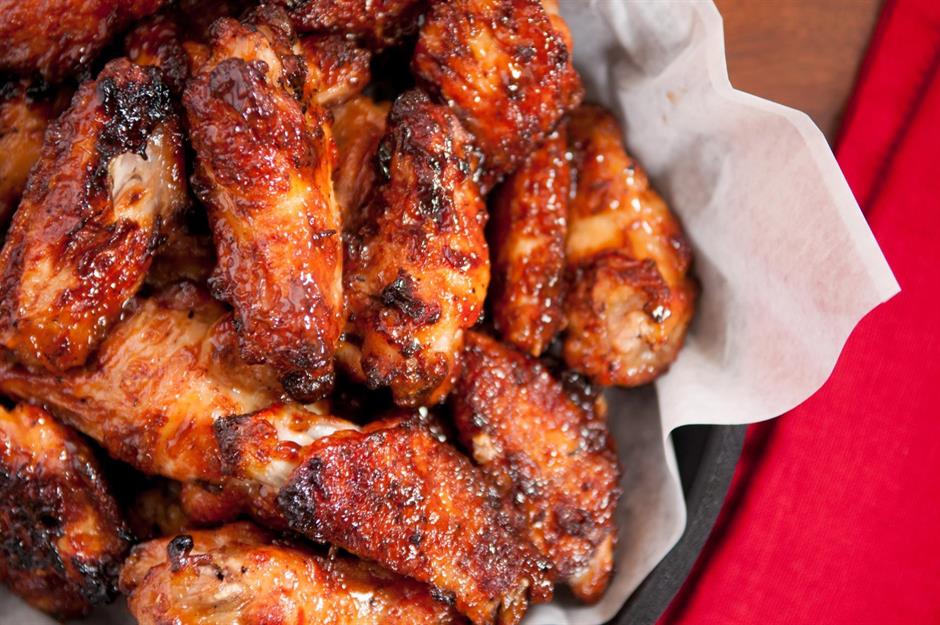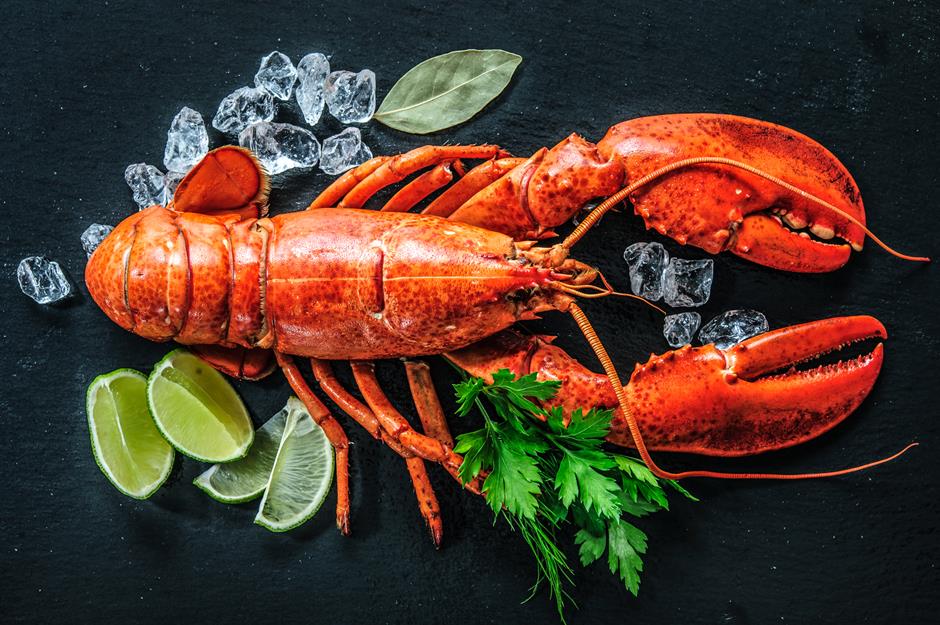You'll never believe how much these foods used to cost
Foods that have come into favour
Lobster
Until the mid-19th century, lobsters were considered so ugly and undesirable that eating them was a sign of poverty, so they were eaten by prisoners and servants. Many servants rebelled against the lobster overload and had their contracts changed to prevent them from having to eat it more than three times a week. It was only when people learned to cook the meat properly that lobster became an expensive delicacy.
Caviar
Caviar is one of the world’s most luxurious foods, so it’s hard to imagine it was once so cheap it was served for free in bars and saloons around America during the 1800s. In the same way nuts are handed out now, these salty fish eggs were given away to encourage higher beer sales. But over-fishing meant the once abundant levels of sturgeon fish dropped dramatically, causing prices to skyrocket.
Snails
Archaeological evidence suggests that snails were likely first eaten by humans during the Prehistoric era throughout the Mediterranean region. Later, they gained an appreciation among rich Greeks and Romans. But it wasn’t until the French began serving them with aromatic butter that escargot began to be considered a delicacy.
Monkfish
The freaky-looking fish was considered so ugly, fishmongers were banned from selling it with its head on for fear it could scare customers. It was even banned from some markets because of its lack of commercial value. Nowadays, it’s gained a reputation within the culinary world as the ‘poor man’s lobster’ thanks to its luxurious taste and texture.
Polenta
It’s become quite trendy for some celebrity chefs, particularly in America, to create sophisticated dishes using polenta. Over the years, this has fuelled its reputation as a high-end food, with a high-end price tag to match in some restaurants. It does, however, remain affordable in most shops and is still used in a lot of cheap fast food dishes throughout Latin America and Italy.
Sweetbreads
For the uninitiated, sweetbreads could be confused with a lightly baked roll of dough. But they’re actually a type of offal, made with the discarded parts of calf and lamb. They usually include the thymus (throat, gullet, or neck) or pancreas. These parts were traditionally eaten by the poor until chefs began taking up their cause and featuring them on menus, either sautéed, fried or added to pâté.
Brisket
Brisket was once dismissed as a cheap cut of meat only deserving of the mincer or a pot roast. At one point, it was so undesired in the beef-loving state of Texas, that many butchers gave it away. But the tide has turned and now trendy ‘brisket bars’ have opened around the world. This increased appetite for brisket, combined with the general hike in beef prices plus new innovative ways of cooking it, has turned it into much pricier meat.
Quinoa
At one time quinoa was just a cheap grain enjoyed by Peruvians. Now it’s one of the world’s most fashionable foods and can be found in all sorts of fancy superfood salads and upmarket meals. As a result, its value is now considerably higher than it once was.
Oxtail
Oxtail is another cheap butchers' cut that has risen in demand and price over the years. Once underused, it’s now the main ingredient in many Caribbean and Asian dishes that have grown in popularity in the UK and US.
Peanuts and peanut butter
According to NPR, the cost of peanuts has risen in recent years because many American farmers gave up growing them in favour of cotton, which yields a greater profit. Since then, demand has continued to rise, resulting in ever-increasing prices. Interesting considering they were once so cheap they were only popular among the poor and fed to livestock.
Eel
Once in plentiful supply in Japan, freshwater eels became so popular they were added to the nation's list of endangered fish. In 2013, the Japanese Ministry of the Environment reported numbers had declined by 90% in just three decades. Rare and in high demand, the price of farmed eels (especially smoked) is now higher than ever.
Portobello mushrooms
Here’s another price hike you can blame on food trends. Portobello mushrooms were mostly ignored until the 1980s, considered too ugly and rough to be sellable. But they were reborn when earthier whole foods became more popular. With their posh Italian-sounding name, they were marketed as a fancy new ingredient and immediately took off.
Fungi fan? Be inspired by our top 10 mushroom recipes
White King salmon
There was a time when fishmongers couldn’t convince people to try white salmon. It wasn’t seen as commercially desirable at all. Nowadays, the novelty in cooking it is a big selling point and it can be found on the menus of many high-end restaurants and chic sushi bars, and at an even higher price than its pink counterparts.
Garlic
This pungent vegetable was largely avoided in the US and Britain because of its strong flavour and overpowering taste. It wasn’t until immigrants from Italy, Germany and Poland settled and revealed how tasty it could be that its popularity, and its price, increased.
Oysters
An abundance of oysters in the water beds of New York and London in the 1800s meant they were incredibly popular among the working classes. They even get a mention in Charles Dickens’ The Pickwick Papers. Like caviar, they were given away in bars to encourage repeat custom. But as factories were built and the populations of both cities boomed, demand outstripped supply and numbers declined. This scarcity led to them becoming one of the world’s most sought-after seafood.
Sushi
Sushi was first created in Southeast Asia during the 4th century as a cheap and transportable snack. Although it’s still a common and affordable meal in many countries, you can expect to pay a hefty bill in some upscale sushi restaurants offering exotic concoctions with expensive fish, particularly in the West.
Chicken wings
You might not think of chicken wings as pricey, especially as you’ll often find them in a bargain bucket, but they are the most expensive part of the bird. At one time, they were so unappealing, they were thrown away or used in stock. But the popularity of buffalo wings in the 1960s led them to become a staple of many fast-food chains and bar menus so prices increased.
Skirt steak
Thinly-sliced and mostly found in delis and sandwich bars, the skirt steak was once an inexpensive cut of meat. But its value rose when it started to be used in Mexican-inspired fajitas, which soared in popularity during the 1980s. Per lb, the price of skirt steak more than doubled in just a couple of years. Now let’s look at some of today’s cheaper foods and drinks that are forecast to rise in price over the next decade...
Coffee
Around 70% of all coffee is grown from the same plant: the arabica. A 2012 study by the Royal Botanic Gardens at Kew predicted these Ethiopian plants will be so badly damaged by climate change their numbers would decrease by 85% before the end of the century. Numbers are also dwindling in this region thanks to deforestation, which could result in higher coffee prices far sooner.
Coffee addict? Here are some rules for making the perfect coffee at home
Wine
Climate change will also have a big impact on wine production, as grape growing is extremely sensitive to changes in temperature. Around 73% of Australia's vineyards and 70% of California's will be unsuitable by 2050, according to a study by Proceedings of the National Academy of Sciences. This global shortage could mean that we’ll be paying more for a bottle in the future.
Honey
The number of bees around the world has dropped dramatically in recent years, which is very bad news for honey lovers. Over the next decade, honey is likely to become more and more expensive, as a worldwide shortage of raw honey increases its demand. Bee pollination also impacts all kinds of foods, from apples to kiwi fruit, avocados to cabbages.
Chocolate
We’re already eating chocolate faster than we can produce it, according to a study by Mars Inc. and Barry Callebaut. This deficit, combined with the threat global warming poses to the number of cocoa trees in Ghana and the Ivory Coast in West Africa (where most of the world’s chocolate supply comes from), could result in a lower yield and higher prices in the future.
Cherries
Lower temperatures are also wreaking havoc on our supply of stone fruits, particularly cherries. In 2012, the cherry industry in Michigan lost 90% of its crop after a late freeze. If the trend towards unseasonable weather continues, it could be disastrous for these crops and prices for the more limited supply of fruits will skyrocket.
Beans
Cheap and hearty legumes are a staple part of many diets, particularly in Latin America and Africa, but they’re set to become more expensive in the next few years. Studies suggest yields could dramatically fall over the next decade because of higher temperatures in the bean-growing regions of East Africa.
Now discover more of the world's most expensive ingredients

